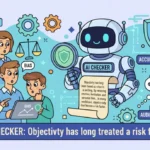Managing HR operations manually becomes increasingly challenging as your business grows. For Singapore-based companies scaling beyond 50 employees, investing in the right Human Resource Management System (HRMS) is no longer optional; it’s essential for staying competitive.
Understanding HRMS: More Than Just Digital Filing
An HRMS is a comprehensive software solution that automates and streamlines your HR processes. It goes beyond simple record-keeping to handle payroll, attendance tracking, leave management, claims processing, and performance reviews.
Think of it as your digital HR department that works 24/7. The right system eliminates tedious paperwork and reduces costly human errors.
Why Singapore Businesses Are Prioritizing HRMS in 2026
The Ministry of Manpower (MOM) continues to update employment regulations and compliance requirements. Staying on top of these changes manually is time-consuming and risky.
Singapore’s tight labor market means companies must focus on employee experience to retain talent. Modern employees expect seamless digital experiences, including self-service HR portals.
Additionally, with remote and hybrid work becoming permanent fixtures, cloud-based HR systems are now necessities rather than luxuries. Your HR team needs access to critical information from anywhere, anytime.
Key Features Every Singapore Business Should Look For
1. Payroll Automation and CPF Compliance
Payroll is the backbone of HR operations. Your HRMS must handle Singapore’s complex payroll requirements, including CPF contributions, SDL, and FWL calculations automatically.
Look for systems that integrate with banking partners for seamless salary disbursements. This eliminates manual bank file uploads and reduces processing time from days to hours.
Error-free payroll isn’t just about employee satisfaction; it’s about MOM compliance. Late or incorrect CPF submissions can result in penalties that hurt your bottom line.
2. Time and Attendance Tracking
Accurate attendance tracking is crucial for payroll accuracy and productivity monitoring. Modern HRMS solutions offer biometric integration, mobile check-ins, and geofencing capabilities.
For companies with shift workers or multiple locations, flexible rostering features are essential. Your system should accommodate different work arrangements without requiring complex workarounds.
Real-time attendance data helps managers identify patterns and address issues proactively. This visibility becomes invaluable during performance reviews and workforce planning discussions.
3. Leave Management System
Singapore’s Employment Act mandates specific leave entitlements that vary by employee tenure and circumstances. Your HRMS should automatically calculate and track annual leave, medical leave, childcare leave, and other statutory entitlements.
Employees should be able to apply for leave through mobile apps with instant approval workflows. Managers need clear visibility of team availability to prevent scheduling conflicts.
The system must also handle leave carry-forwards, encashments, and pro-rated calculations for new joiners. These complexities become nightmares when managed through spreadsheets.
4. Claims and Expense Management
Manual expense claims create bottlenecks and frustration for employees and finance teams alike. A good HRMS digitizes the entire process from submission to reimbursement.
Look for features like receipt scanning through mobile apps and customizable approval hierarchies. Integration with your accounting software ensures seamless financial reporting.
Clear policy guidelines built into the system prevent unauthorized claims. Employees know exactly what’s claimable before submission, reducing back-and-forth communications.
5. Employee Self-Service Portal
Empowering employees to manage their own HR tasks reduces administrative burden significantly. Self-service portals allow staff to update personal details, download payslips, and access company policies independently.
This transparency builds trust and improves employee satisfaction. People appreciate having 24/7 access to their employment information without waiting for HR responses.
For HR teams, this means fewer routine queries and more time for strategic initiatives. It’s a win-win situation that pays dividends in productivity.
Scalability: Planning for Growth
Your business won’t stay at 50 employees forever. Choose an HRMS that grows with you, whether you’re expanding to 100, 500, or even 10,000+ employees.
Consider multi-entity capabilities if you plan to open branches or subsidiaries. The system should handle multiple companies under one umbrella without requiring separate installations.
Regional expansion plans? Ensure your HRMS supports multi-country operations with localized compliance features. For instance, platforms like BIPO HRMS support operations across 20+ countries with built-in compliance for local labor regulations, making them ideal for Singapore companies eyeing regional growth.
Integration Capabilities Matter
Your HRMS doesn’t operate in isolation. It needs to communicate seamlessly with your existing tech stack, including accounting software, time clocks, and productivity tools.
API availability and pre-built integrations save implementation time and reduce costs. Ask vendors about their integration ecosystem before committing.
Data silos create inefficiencies and errors. A well-integrated system ensures information flows smoothly across departments without manual data entry.
Mobile Accessibility Is Non-Negotiable
Singapore has one of the highest smartphone penetration rates globally. Your employees expect to handle HR tasks on their mobile devices, not just desktops.
Look for native mobile apps (not just mobile-responsive websites) that offer full functionality. Employees should be able to apply for leave, submit claims, and view payslips on the go.
Managers need mobile approval capabilities to keep processes moving smoothly. Waiting until they’re back at their desks creates unnecessary delays.
Security and Data Protection
HR systems store highly sensitive employee information, including NRIC numbers, salary details, and bank accounts. Robust security measures are non-negotiable.
Ensure your HRMS provider is ISO 27001 certified and complies with Singapore’s Personal Data Protection Act (PDPA). Ask about data encryption, access controls, and audit trails.
Cloud infrastructure matters too. Systems hosted on reliable platforms like AWS or Alibaba Cloud offer better uptime and disaster recovery capabilities.
Localization and Support
Generic international HRMS solutions often miss Singapore-specific requirements. Look for providers with a deep understanding of local employment laws and practices.
Local support teams that understand your timezone and business context are invaluable. When issues arise, you need quick resolutions, not delayed responses from overseas teams.
Check if the system supports multiple languages if you have a diverse workforce. English is primary, but Chinese, Malay, and Tamil support can improve adoption rates.
User Experience and Adoption
The most feature-rich HRMS is worthless if your team won’t use it. Intuitive interface design directly impacts adoption rates and ROI.
Request demo access for both administrators and end-users. The system should feel natural to navigate, not require extensive training manuals.
Consider change management support from your vendor. Implementation training and ongoing support ensure smooth transitions and maximum utilization.
Cost Considerations for Singapore SMEs
HRMS pricing models vary widely, per employee per month, annual licenses, or one-time purchases with maintenance fees. Calculate the total cost of ownership over 3-5 years, not just initial costs.
Factor in implementation costs, training, customization, and support fees. Hidden costs can quickly turn an “affordable” solution expensive.
However, don’t make decisions based solely on price. The cost of HR errors, compliance violations, and inefficiencies often exceeds HRMS investment many times over.
Customization vs. Out-of-the-Box
Every business has unique processes, but excessive customization creates long-term maintenance headaches. Striking the right balance is crucial.
Look for configurable systems that adapt to your workflows without requiring code changes. This flexibility ensures the system molds to your business, not vice versa.
Understand what can be customized post-implementation. Your needs will evolve, and your HRMS should accommodate changes without major overhauls.
Vendor Reputation and Track Record
Research your shortlisted vendors thoroughly. How long have they been in the Singapore market? What’s their client retention rate?
Read case studies and request client references in your industry. Speaking with current users reveals insights that sales presentations won’t cover.
Check their product roadmap and update frequency. HR technology evolves rapidly, and your vendor should continuously innovate to stay relevant.
Trial Period and Implementation Support
Never commit without a trial period. Hands-on experience reveals usability issues that demos might hide.
Ask about implementation methodology. Does the vendor assign dedicated project managers? What’s the typical implementation timeline?
Comprehensive data migration support is crucial. Your historical HR data must transfer accurately without loss or corruption.
Making Your Final Decision
Create a weighted scoring matrix based on your priorities. Not all features carry equal importance for your specific situation.
Involve key stakeholders from HR, IT, finance, and management in the evaluation. Different perspectives prevent overlooking critical requirements.
Remember that your HRMS will be a long-term partner in your growth journey. Choose wisely, considering both immediate needs and future scalability. Modern systems like BIPO HRMS offer comprehensive solutions with mobile accessibility, multi-country support, and robust security features that Singapore’s growing businesses increasingly prioritize in 2026.
Conclusion: Invest in Your People Operations
Choosing the right HRMS transforms HR from an administrative burden into a strategic advantage. The time saved on routine tasks can be redirected toward talent development and employee engagement.
For Singapore businesses navigating growth, the right HRMS isn’t an expense; it’s an investment in operational excellence. Take your time, evaluate thoroughly, and choose a system that will support your ambitions for years to come.
Your people are your greatest asset. Give them the HR technology they deserve.






